
The prototype of the Type 18 during the tests at Zhukovsky in early 1939. Here we can see the propeller with the spinner removed; the balance horns are visible at the base of the blades.
According to many sources, few early Type 18s were equipped with the old VFSh propeller and spinner of the Type 10, and many other ones with a VISh-6A with a characteristic spinner, and only the final batch with the AV-1, that was the same propeller of the Type 24. Personally, I can't see differences in photos between the propellers of Type 18 and Type 24.
There was a new triangular air intake for the supercharger at the top of the nose, while the intake for the oil cooler on the lower part of the nose was trapezoidal with bent-inside sides.
From the photo, one could suspect that the lower part of the cowling of the prototype could have been shaped as on Type 10; on production Type 18s there was a characteristic fairing for the larger oil cooler of the M-62 with a final cut for the outlet, that altered the profile under the nose.
We can recognize the recesses for the retractable ski gear closed with removable aerodynamic covers under the cowling, already introduced on late Type 10 and on Type 17.
Image from Polikarpov's I-16 fighter of Gordon and Dexter
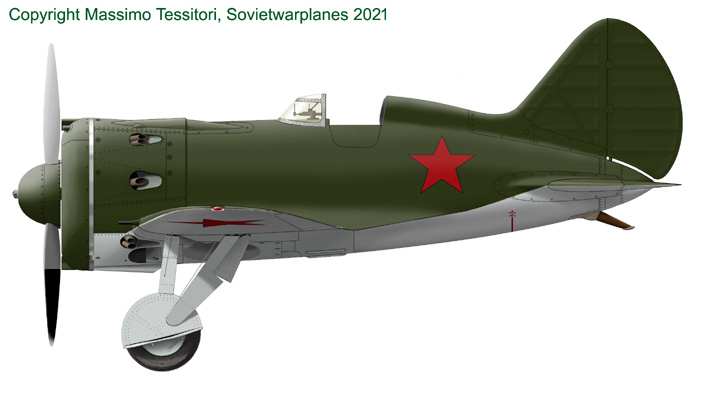
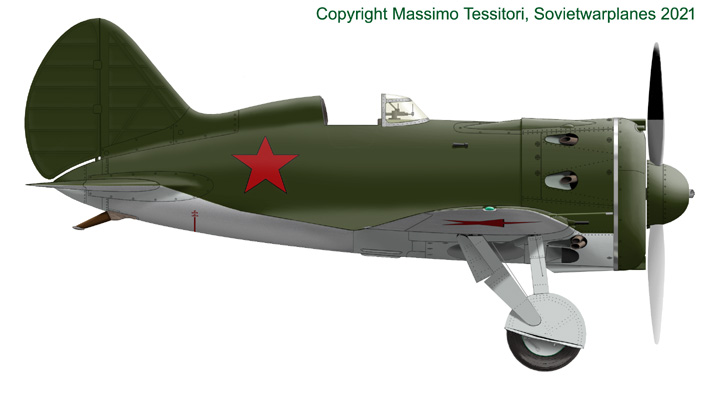
Profile view of a typical early type 18.
The visual characteristics of Type 18 were:
-
VISh-6A propeller with hydraulically movable pitch later replaced by the same MV-1 of Type 24; both those propeller were visually similar, visually characterized by the bigger and bulbous spinner or, when this was removed, for two balance weights on the hub; besides the shape of the blades was more 'fat' and their curvature more continuous than the VFSh blades of older types, that had a sharp change in curvature on the tip;
-
a triangular air intake for the supercharger was put on the top of the cowling (as on Type 24-27-28-29);
-
the intake of the oil cooler under the nose became trapezoidal or trapezoidal with bent inside sides (as on type 24, 28 and late 27);
-
a fairing for the oil cover outlet, that altered the profile under the nose (as on Type 24-27-28);
-
armed with two synchronized ShKAS on the nose and two on the wings (as on type 10 and 24);
-
short ailerons and flaps as on Type 10-17, but mechanically operated instead of pneumatically operated;
- landing gear with splined shock adsorber as on Type 5-10-17 and straight cover of the leg, with the upper piece smaller than the lower one; on very late production Type 18s, scissor-type legs were introduced, distinguishable for some protrusion of many shapes on the back of the door and bay;
- tail skid (as on type 5-10-17); on late production ones, it was replaced with a tail wheel (as on type 24-28-29 and late 27)
- very late production planes were equipped with a tail wheel and a second pilot's door on the right side (as type 24-28 and late 27);
- armoured backrest (as on late Type 10, 17, and 24, 27, 28, 29)
-
on the rearward side of the sides of the cowling, a separate panel was provided to give better access to the ammo boxes of the synchronized ShKAS (as on very late Type 10 and 17 and successive Types 24, 27, 28, 29);
-
open recesses for the ski gear in retracted position under the cowling, eventually closed by a removable optional aerodynamic fairing that let only a slot on the rear for the exit of the cooling air of the engine;
-
two recesses only, each for two exhaust pipes, under the cowling, close to the wing fillets (as on late type 10 and on type 17, 24, 27, 28)
-
PAK-1 gunsight (as on late Type 10 and on later types, probably changed to PAK-1M on late production Type 18).

Above:
top view of a typical Type 18.
It differed from Type 10:
- for the propeller AV-1 and bulbous spinner
- for the supercharger intake on the top of the cowling;
- trim tab on the ailerons became standard.
It differs from the early Type 24 for:
- the lack of a pilot's door and of a radio hatch on the right side;
- the lack of a leather protection on the doors edge;
- the older PAK-1 gunsight without the small safety cushion of the PAK-1M.
These differences were progressively lost on the final production Type 18s.
Below:
bottom view of typical Type 18. It differs from late Type 10 for:
- the propeller AV-1 and bulbous spinner;
- the oil cooler intake, trapezoidal with bent-inside sides;
- the protruding cowling and outlet of the oil cooler, as on type 24/27/28.
- the fastener around the engine cowling is moved on the left, as on all M-62 and M-63 engined versions.
It differs from Type 24 for:
- the landing gears with splined-type shock adsorbers, with straight legs covers distinguishable from those of the scissor-type legs that had some protrusion of many shapes on the back of the door and bay;
- the landing gear skid instead of the tail wheel of later types, probably associated to the new shock adsorbers.
These differences were progressively lost on the final production Type 18s.
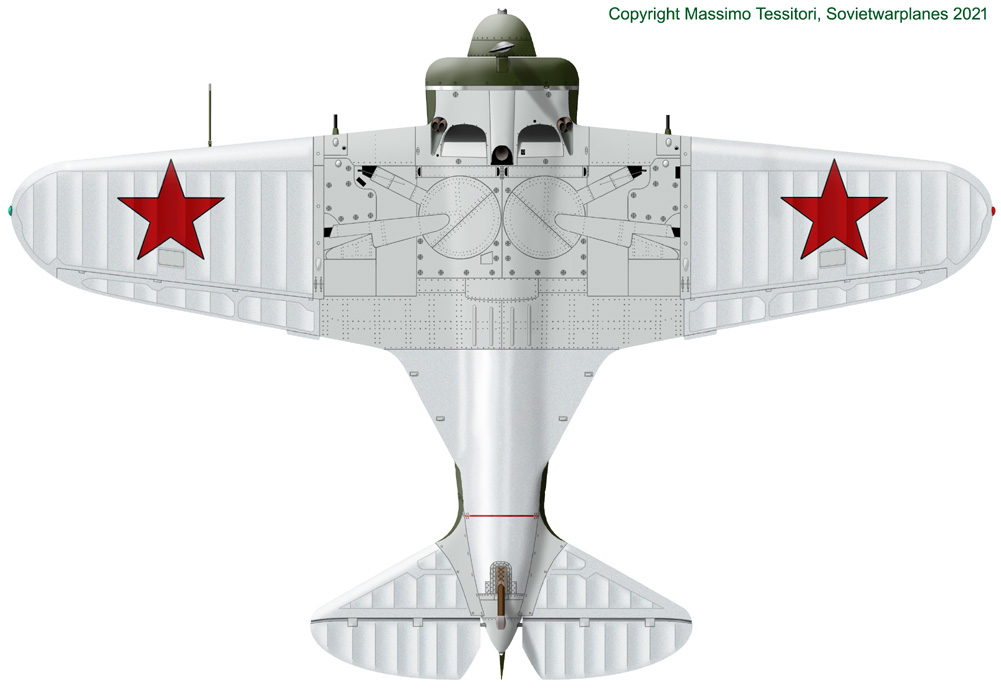
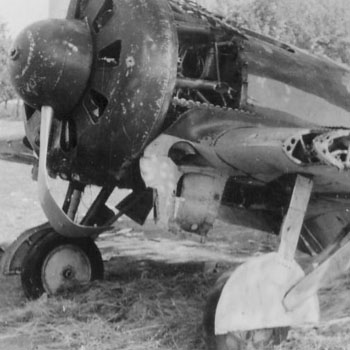
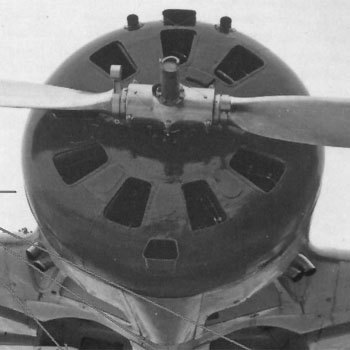
Extreme Left:
A plane likely identifiable as a Type 18; it can be distinguished from a type 24 because of the thin and straight shape of the main leg cover. Note the removal of the foldable wheel cover flaps; they were often removed to reduce the aerodynamic alterations during the extraction of the landing gear.
Mid left:
image of the nose of a Type 27, fully compatible with a Type 18. We can see clearly some differences compared to the Type 10:
- the different hub of the MV-1 propeller, that was longer and with balance horns for in flight variation of the pitch;
- the flat protrusion on the front plate at 1 o'clock just above the hub, that is nearly hidden when the spinner is installed; this was for the engine rotation constant speed regulator installed on M-62 and M-63 engines;
- the regulator itself is related to the small plate visible through the vent at 1 o'clock, absent on all the other vents;
- the triangular air intake for the supercharger of M-62 and 63 engines, between the ShKAS muzzles, is a strong distinctive characteristic between Type 10-17 and later fighter versions;
- the intake of the oil cooler was trapezoidal with bent-inside sides as on Type 24 and 28; the one on this photo was a bit atypical because it had straight sides;
- the fairing of the oil cooler under the cowling was slightly protruding and changed the shape of the cowling in profile view; it was open on its rear for the air outlet;
- the fastener of the belt around the cowling was moved on the left side instead of in the center;
- note the scarcely visible oval flat protrusions between the vents.

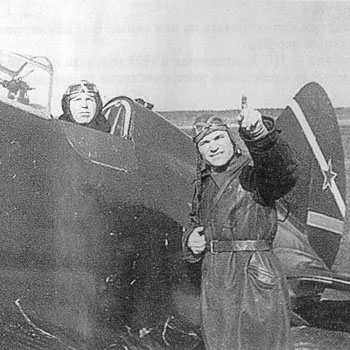

Left: a type 18 in service with the 13th Special Squadron of the Baltic fleet in 1940.
The the cover and bays of the leg of the main landing gear are straight instead of curved, a sure sign that the shock adsorber were made at the old way, splined profile instead of scissors.
Right: photo of another plane of the same unit, possibly type 18, as suggested by the PAK-1 gunsight (the Type 24 had the PAK-1m with a small rectangular cushion to stop the pilot's head in case of crash landing).
The emblem on its tail suggests that this was a squadron commander's plane.
The photo below shows that other planes of the same unit bear a simple number on their tails, and only one shows the stripes and the red starlet. This seems to confirm that it was the squadron commander.
Photos from Istrebitel I-16 of Maslov and from Polikarpov I-16 Fighter of Gordon and Dexter.
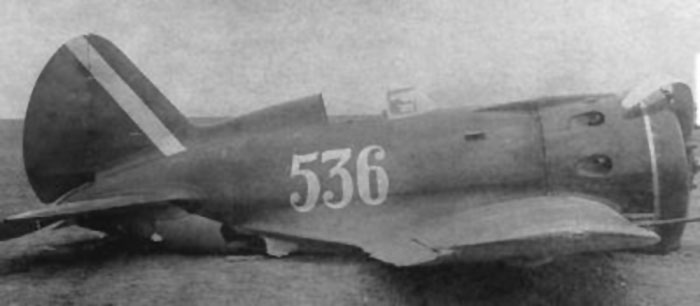
Type 18 White 536, sn 1821k72, belonged to the 2nd Squadron of 50 IAP, second Lieutenant I. I. Mezentsev.
It made a belly landing on 4.03.41 at the airport of Sital-Chay.
The oblique white band was the regimental mark of 50 IAP.
Note the lack of the spinner.
Image from M-Hobby 2/2019, article of M.Timin.
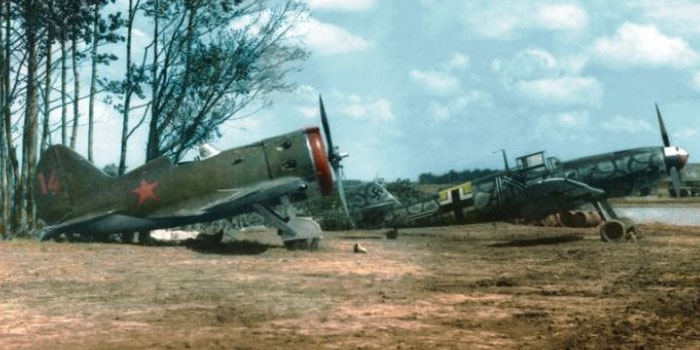
Remarkable color photo of a Type 18 captured by Germans in 1941.
The plane showed an unsuspectable red front.
Image from the web
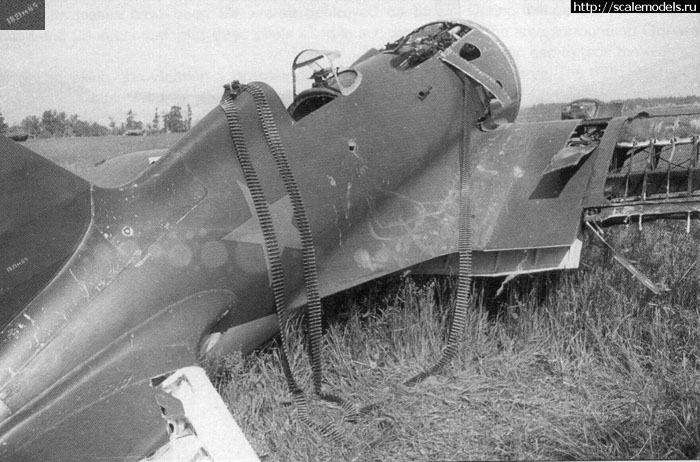
Image of positively identified Type 18, whose serial number is partially readable: 1821...
The image allows to see some typical details.
The plane was lost during Barbarossa; the right wing appear burned.
Image from Scalemodels.ru

Photo of I-16 Type 18.
Note the undersurfaces painted in pre-1940 style, with grey AE-9 metallic parts and aluminum fabric-covered parts.
The oil cooler intake on the lower part of the front is of the trapezoidal with bent inside sides, as on Type 24.
Image from Istrebitel I-16 of Maslov.
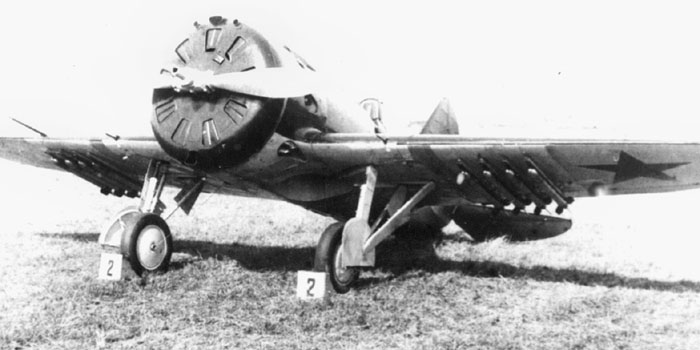
Photo of a I-16 experimentally armed with 8 rockets and rails. The length of the rockets is unusual for RS-82.
One can distinguish the metallic plates that reinforced the wing undersurfaces to prevent the skinning to be damaged by the fire of the rockets.
This is identified as a Type 18 because of the shape of the landing gear doors, that seems straight as on Type 10, not curved as on Type 24.
The lack of the spinner allows to see some details of the front plate, related to the speed regulator of M-62 and M-63 engines.
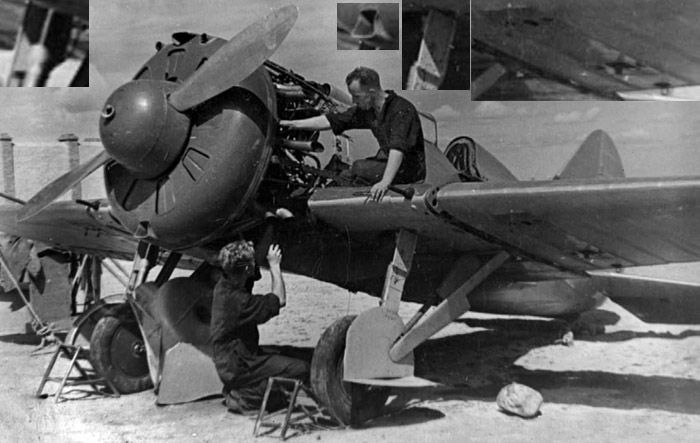
An I-16 of uncertain identification. The look is broadly compatible both with a late Type 18 or an early 24.
At a first look, the shape of the covers of the landing gear seem of the early type, both for seeming straight and narrow and for having the small upper element, as on Type 5 and 10.
At a second look to the other leg, barely visible under the nose, it could seem that the door and/or leg have a protrusion backwards that can only be a scissor.
In this case, we could see a very rare intermediate form where the upper part of the cover was straight and small as on the planes with splined landing gear, but the lower part, long and overposed to the smaller one, had a protrusion backwards that was intended to close a small protrusion on the rear of the leg bay to lodge the scissor.
Comparing it to the photos of the door of the prototype Type 24, that had a shape more similar to the definitive one, we conclude that the plane of this photo was built before, and this identifies it as a Type 18.
Another unusual characteristic for a Type 18 was the visible plate for the auxiliary tanks under the wings.
Looking to a list of serials of Type 18 and 24, some of the planes have a letter P, ex. 18P21M44; if this designates the planes with the predisposition for auxiliary tanks, then they have to be called Type 18 P and Type 24 P.
Image from Istrebitel I-16 of Maslov.
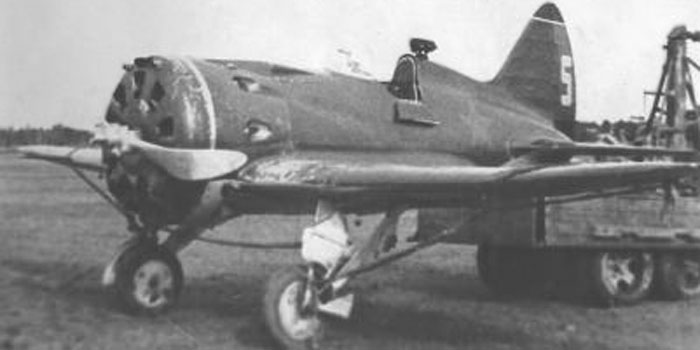
I-16 Type 18 s/n 1821K-83 flown by Capt A.K. Antonenko. of 13 IAP KBF.
The plane featured a red cap and light blue number 5, both with white outline.
We can see the camera gun installed on the top of its back.
Image from M-Hobby 4-2019, article of M.Timin.
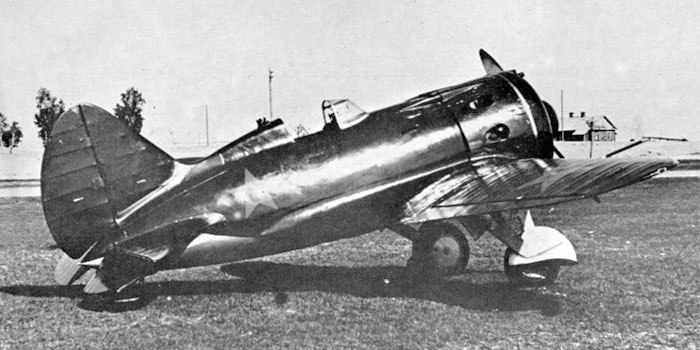
A shining new I-16 Type 18 of very late production, still without squadron numbers.
On a larger resolution image, the factory number on the tail should be readable.
The image seems to suggest that this plane had a door on the right side too, as Type 24. It is possible that it had landing gear legs with scissor and tail wheel as Type 24; so, it could be distinguishable from Type 24 only for its M-62 engine instead of the M-63.
Image from Istrebitel I-16 of Maslov.